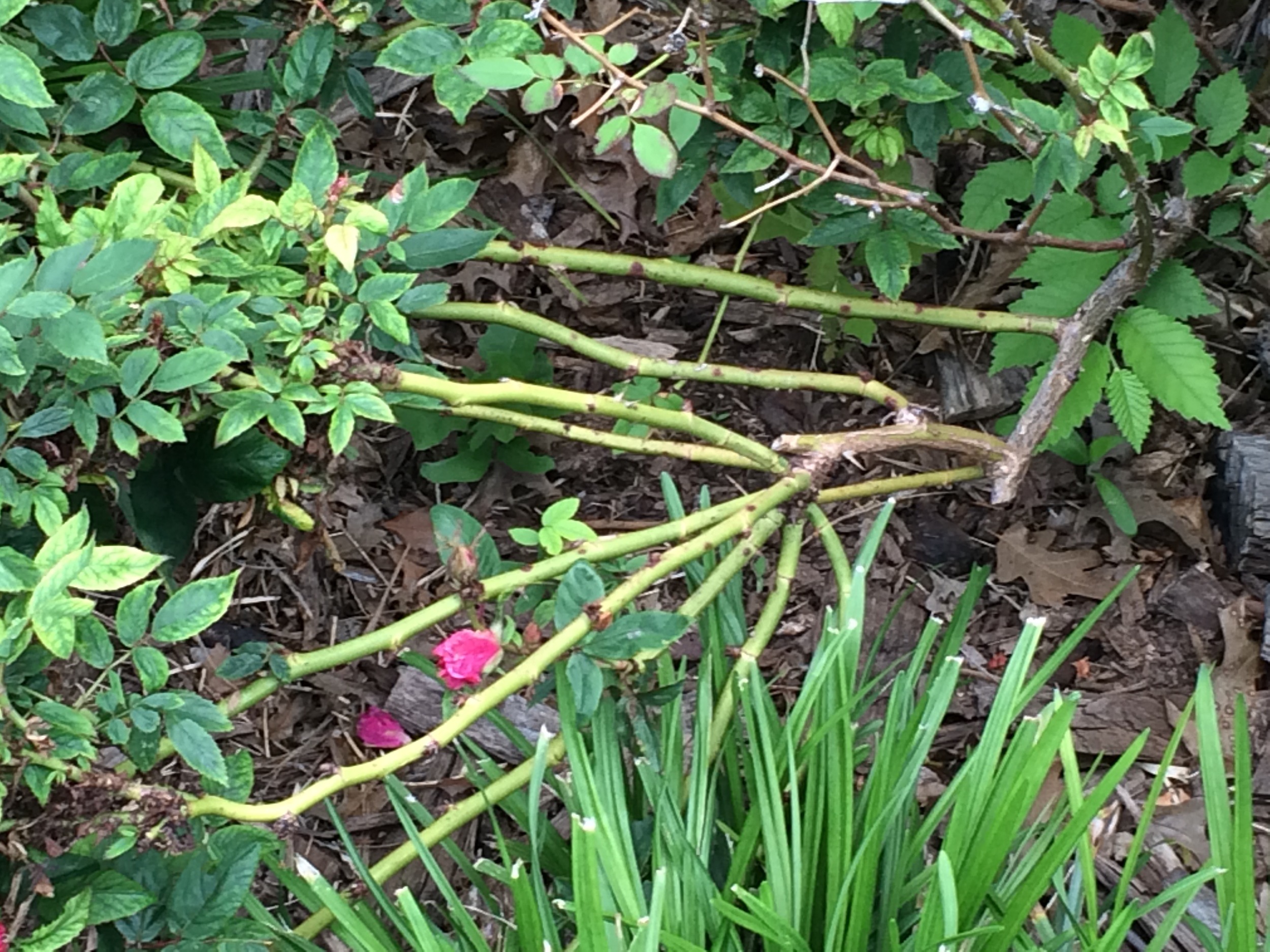witches' broom
Did you think I was posting about Halloween? Unfortunately not! Several years back, knockout and double knockout roses became a favorite go-to for adding color to landscaping in the form of a shrub. They were touted as being hearty, drought tolerant and disease free. With our Texas heat, and my desire for splashes of color in the landscape, I had to have some. We planted around 20 one gallon plants in several locations around the property. At first, there was no disappointment. These roses seemed awesome and they provided an immediate explosion of continuous color from early spring, throughout the summer, into the fall with little care needed.
We have two major groupings of them with the larger being in our front yard. A few years ago, I noticed the roses in the front yard seemed different than the rest. They started to exhibit totally different characteristics. To name a few they had: bright red leaves and stems, excessive thorniness, distorted blooms, extremely thick stalks or canes, stunted growth, yellow & brown foliage, and stem bunching or clustering (witches' broom appearance).
Little did I know at the time but our roses were sick. For the last couple of years I tried trimming, feeding, mulching and a few other things but nothing seemed to help. Early Spring this year I decided to research what I was seeing. My desire for answers came to me while waiting in a parked car near a bed of roses in part of a landscaped parking lot and the roses seemed to look the same as the ones I had at home. My immediate research revealed that the problem is rose rosette disease. The disease is actually a virus with many of the symptoms I mentioned above and is thought to be spread by tiny mites that can carry the nasty disease. The specific mite is named Phyllocoptes fructiphilus and the type of mite is called an eriophyid mite (wooly mite). The disease is fatal to the entire bush and to date there is no known cure.
My attempt at saving them was only a death sentence for every rose bush in the bed. The remedy was to remove every bush and destroy it along with the soil immediately around the infected bush. When removing infected plants do not add any of the plant/dirt materials to your compost and it's best not to attempt re-planting anything else in the immediate area for a bit as the infected soil needs time to heal.
Source: Texas A&M AgriLife Extension




~don

